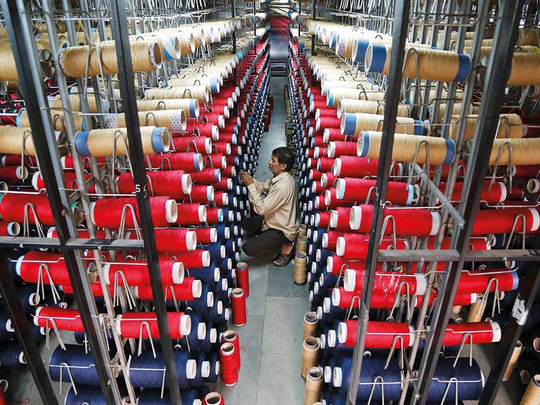
Dubai: Bringing an end to a debate that’s lasted nearly two long decades on the need for a unified national indirect tax structure, India is all set to implement its version of the Goods and Services Tax (GST) starting July 1, 2017.
GST is a comprehensive tax levy on manufacturing, sale and consumption of goods and services at a national level. The Goods and Services Tax Bill (GST Bill), also referred to as The Constitution (One Hundred and Twenty-Second Amendment) Bill, 2014, initiated a value-added Tax (VAT) to be implemented at a national level in India.
GST will be an indirect tax at all the stages of production, which aims to bring about uniformity in the system.
The implementation of GST would mean a merging of central and state taxes into a single tax payment. Under this system, the consumer pays the final tax but an efficient input tax credit system ensures that there is no cascading of taxes or tax on tax paid on inputs that go into manufacture of goods.
In order to avoid the payment of multiple taxes such as excise duty and service tax at a central level and VAT at a state level, GST would unify these taxes and create a uniform market throughout the country.
The current system taxes production, whereas the GST will aim to tax consumption.
Earlier this month, the government put all speculation to rest and clarified that GST will keep the July 1 date for its countrywide roll-out. When implemented, market experts say GST would be a dream come true for the stock market and the economy. There are expectations that the immediate benefit of GST would be felt across sectors, but the biggest beneficiaries would be industries where the unorganised sector has a large market share.
While the new tax regime is expected to reduce a plethora of taxes levied by state governments and bring efficiency in tax administration, the new unified tax system is expected to bring down the overall tax burden on consumers. Despite a potential reduction in taxes on several goods and services analysts expect corporates are unlikely to pass on the full benefits to consumers.
“We believe that while corporates would pass on the direct benefits of GST [like a lower tax rate], they would aim to retain partly [if not fully] the indirect benefits from the saving in logistics costs, streamlining of business processes and the seamless flow of input credits,” Nomura Securities said in recent note.
While GST laws include anti-profiteering measures, analysts say it would be difficult to assess the commensurate price cuts due to difficulties in the estimation of the benefits of GST.
Secondly, the government may not have sufficient bandwidth to check or monitor the pricing or profitability of the entire gamut of tax-paying entities.
Efficiency and broader tax base
CRISIL, an India-based credit rating agency, believes that industry stabilisation under the new tax regime will take a couple of quarters. However, the benefits of GST on business practices and company strategies will be seen only in the medium term. The extent of business efficiency is estimated to be higher in goods as compared to services.
At present, supply chains across major manufacturing industries are strategised based on the tax arbitrage aspect. Seamless tax treatment under GST will eliminate the need for multiple warehouses across states. Furthermore, companies will modify their supply chains based on the assessment of tax savings, inventory-carrying costs and response times to meet market demand.
The GST regime ensures that the tax base for indirect taxes grows through two ways. One, it sets up a system of taking credit for taxes on inputs only if they have been declared and paid by the input manufacturer. This sets up a system of self-policing as it is in the interest of the producer to ensure that he sources goods only from those suppliers who are tax-compliant. Many companies in the unorganised sector who are currently not paying tax are thus expected to fall within the tax net.
Investments in the economy will improve with a more seamless and efficient crediting of taxes paid on capital goods. Currently, companies sourcing capital goods for capacity expansion cannot claim tax credit on capital goods purchased; this will change with the GST regime. Capital goods prices are expected to become effectively 12-14 per cent cheaper as companies avail tax credit. This is likely to increase investments and help growth.












